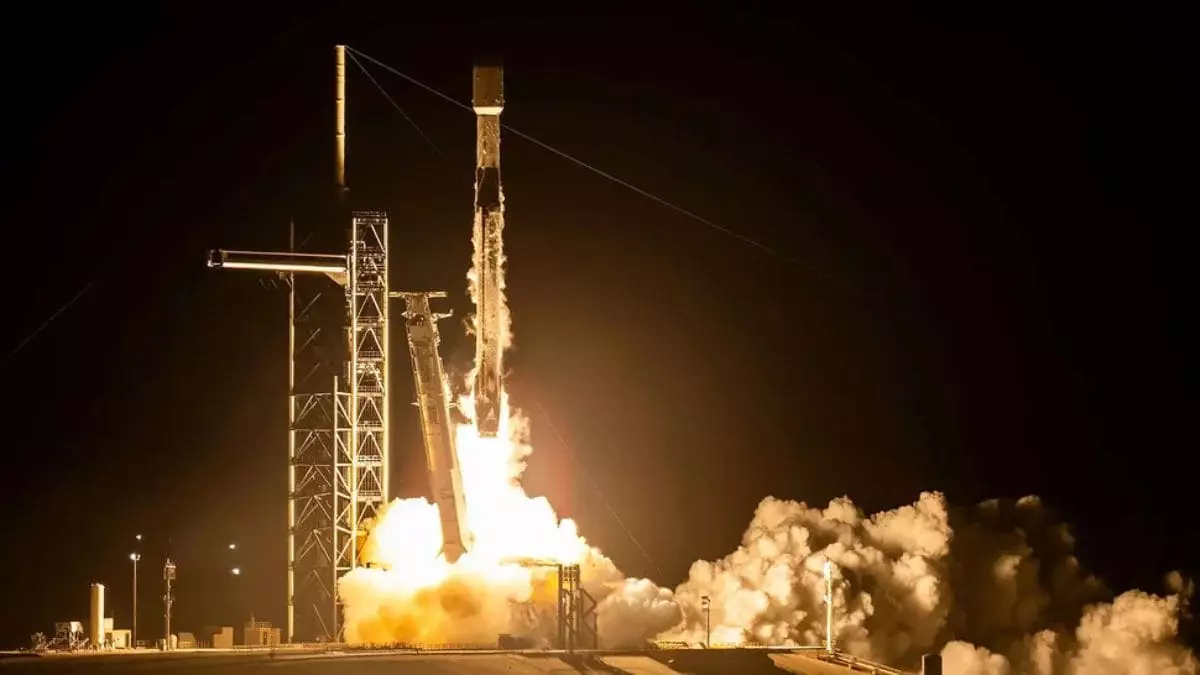In a striking announcement, SpaceX has set its sights on an astonishing goal: 170 orbital missions in 2025, which equates to nearly one launch every day. While such aspirations might be met with skepticism from some corners, they herald a new era in space exploration and commercial launches. The audacity of this plan, introduced by Anne Mason, SpaceX’s director of national security space launch, during a media briefing, underscores an essential truth: the space race is no longer the melancholic endeavor of yesteryears but a vibrant, competitive, and high-speed affair.
Critics may point out that such ambitions could be marred by overreach. The company’s previous record – 134 launches in 2023 – raises the question: Can they maintain this uncompromising pace without sacrificing safety or quality? The answer lies not just in technological prowess but also in a systematic approach to operational efficiency that SpaceX has cultivated over the years. Their formula, centered on reusability, highlights how innovative approaches are redefining what is possible in aerospace.
From Humble Beginnings to Spacepower
Consider the year 2020, when SpaceX managed a mere 25 launches. The average of just two per month makes the aspiration for 2025 all the more remarkable. This transformation reflects not only the company’s investment in technology but also the substantial shift in the landscape of space exploration itself. The Falcon rockets have become an emblem of reliability and cost-effectiveness, allowing SpaceX to dominate both commercial and governmental sectors. The recent success with the Falcon 9, which accounted for 132 of 134 launches last year, showcases how significant technological advancements can radically increase launch capacity.
However, one must not dismiss the ongoing challenges. Increased launch frequency prompts concerns about wear and tear on the launch vehicles, as well as coordination with federal and international space regulations. The intricate ballet that follows each launch—from payload integration to traffic control within orbital paths—complicates SpaceX’s aggressive agenda. Their increasing reliance on the Falcon Heavy for supplementary launches will be a litmus test for maintaining launch cadence without facing potential pitfalls.
Starlink: The Financial Backbone
A significant portion of SpaceX’s launch successes has been underpinned by the deployment of Starlink satellites. The data reveals that two-thirds of their orbital flights were dedicated to this endeavor. While the expansion of Starlink represents a captivating vision for global internet access, it raises questions about the long-term implications for orbital debris and space traffic management. Rushing to fulfill a lucrative space enterprise might inadvertently result in environmental consequences that leave behind a tangled web of inactive satellites and hazardous debris.
Yet, amidst these challenges lies SpaceX’s capability to produce an expendable Falcon upper stage every two and a half days, a heartbeat in aerospace terms. This logistical feat showcases an operational efficiency that should not be overlooked. It hints at a future where space traffic is managed more intelligently, utilizing the same core tenets of sustainability that are increasingly vital in Earth-based industries.
In the end, the foundational question remains: Can SpaceX balance ambition with responsibility? Their pace may be record-setting, but with such velocity comes the responsibility of sustainable practices that ensure the cosmos remains a boundless frontier rather than a cluttered alley. The eyes of the world, and the stakes involved, will undoubtedly keep SpaceX accountable on this high-stakes journey.



Leave a Reply